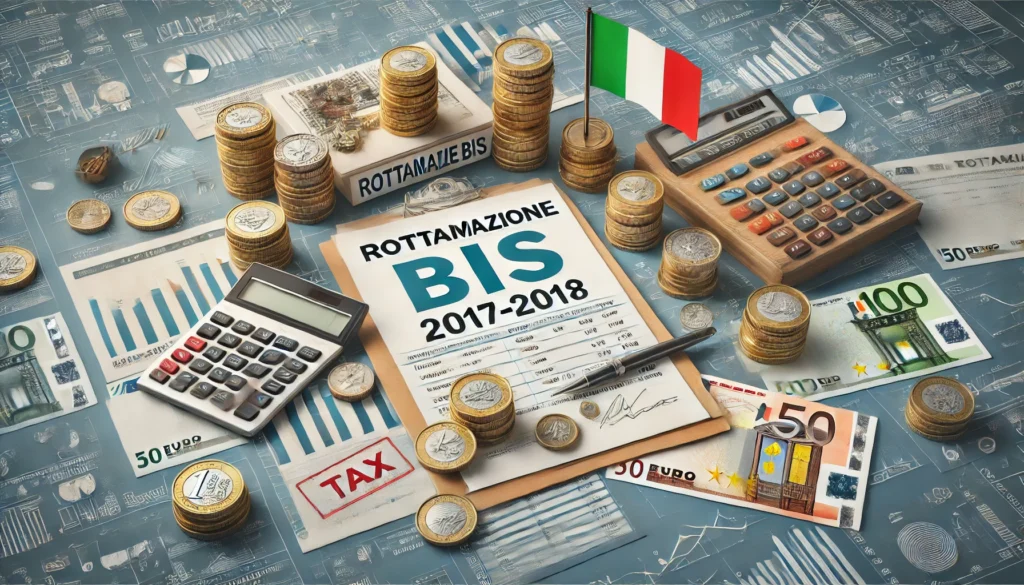Understanding Ivie and Ivafe: Simplifying Italian Wealth Taxes on Foreign Assets
For Italian residents who own property or hold financial assets abroad, navigating the tax code can get complicated. Two important taxes to be aware of are Ivie and Ivafe, which are wealth taxes levied on the value of certain foreign holdings. In this article, we strive to provide a comprehensive overview of Ivie and Ivafe, including their purpose, taxable base, tax rates, and how they fit into the broader Italian tax regime.
What are Ivie and Ivafe?
Ivie and Ivafe are both taxes due on the capital value of assets held or deemed to be held outside Italy. Ivie, or imposta sul valore degli immobili situati all’estero, targets real estate located abroad, while Ivafe, or imposta sul valore delle attività finanziarie detenute all’estero, focuses on any financial asset held outside Italy. So, what are their differences, and how do they work?
Ivie, or imposta sul valore degli immobili situati all’estero, is literally translated as a tax on foreign real estate located anywhere outside Italy. This tax applies to any property, like buildings or land, that an Italian resident owns outside of Italy. In short, it may be considered a tax on real estate. Meanwhile, Ivafe, or imposta sul valore delle attività finanziarie detenute all’estero, is a tax on the value of financial investments held abroad. This tax applies to various financial holdings that an Italian resident keeps outside of Italy, including things like stocks, bonds, and savings accounts.


How are Ivie and Ivafe calculated?
Determining the tax liability associated with Ivie and Ivafe, the Italian wealth taxes on foreign assets, requires careful consideration of several factors. Now, let’s delve into the specific calculations employed for each tax scheme, outlining the relevant formulas and key elements that influence the final amount owed. By understanding these calculations, you as a taxpayer can ensure accurate compliance with their Italian tax obligations.
Ivie (real estate)
- Tax Rate: 1.06% of the taxable value of the property, specifically purchase cost (as of 2024, previously 0.76%).
- Reduced Rate: 0.4% for buildings used as the taxpayer’s main residence.
- Deduction: maximum of €200 per year.
- Payment: Pro-rated based on ownership share and months held during the year.
Taxable Value: This can vary depending on the location of the property, but it’s generally not the market value. Italian tax authorities likely have specific methods for determining the taxable value for Ivie purposes.
Ivafe (Financial Assets)
- Ivafe Rate: 0.2% (Euro 2 per thousand) of the value of the financial product.
- Tax Base: The value of the financial products, typically market value.
- Payment: Pro-rated based on ownership share and months held during the year.
For Current Accounts and Savings Accounts
- Fixed Fee: €34.20 per account, regardless of the amount held.
- Exemption: No tax is due if the average yearly balance is below €5,000 (across all accounts with the same institution).
Reporting Requirements
Now, let’s understand what you must report and when you must do it to avoid any possible penalties.
First of all, you are to submit an RW form. This is a specific section in the Italian income tax return where you list all the foreign assets. The list must include:
- Real estate holdings (IVIE)
- Financial assets (IVAFE): bank accounts, investments, shares, etc.
- Details of how assets were acquired, dates, and where they are held
Next, you have to look at your banking balance. If your bank account balance hasn’t reached €15,000 throughout the year and you don’t have other assets triggering IVIE or IVAFE, you don’t need to submit any reporting documents. Yet, if you exceed the threshold for bank accounts or have IVIE-liable real estate, you are to report using the RW Form even if your tax calculation results in zero liability.
Deadline: Now that we’ve discussed what you have to report, it’s high time to check the tax period deadlines. You submit an RW form with your annual Italian income tax return. That means your payment deadlines are typically in June and November. Yet, don’t take into account only this data and check specific dates for the tax year beforehand.
Reporting Process
Yet the reporting process is quite individual; there is a generalized procedure nearly everyone has to follow.
First, you have to identify any reportable assets by double-checking the IVIE and IVAFE requirements. Next, collect all necessary information about the reportable assets. This typically includes:
- Asset type (e.g., stocks, bonds, real estate, bank accounts)
- Name and location of the financial institution or custodian
- Account balances or asset values at specific reporting dates
- Account numbers or identification codes
- Details of any income or gains generated from the assets
After you have gathered all this information together, you have to submit a report to the Mexican tax authority (SAT) electronically through designated platforms or as part of your annual tax return.
Once again, take into account that strict deadlines apply, so it’s crucial to understand filing timelines.
Penalties
Missed reporting deadlines, incorrect information, or failure to comply with IVIE and IVAFE can result in fines, unpaid taxes, interest, and surcharges. Penalty amounts depend on the severity of the violation. Consult a Mexican tax advisor for specific guidance and options to minimize penalties.
Examples of Assets Covered by Ivie and Ivafe
Ivie (Real Estate): This tax applies to various types of real estate owned by Italian residents outside of Italy. Examples include vacation homes, rental properties located outside Italy, land, and commercial real estate located in a foreign country.
Ivafe (Financial Assets): Ivafe encompasses a wide range of financial instruments held abroad. Examples of financial assets subject to Ivafe include:
- Publicly traded shares (stocks)
- Government and corporate bonds
- Unit trusts, funds, and certain non-profit insurance contracts
- Foreign currency contracts
- Precious metals
- Derivative contracts
- Bank accounts and savings accounts held outside Italy
Recent Changes in Tax Laws
In recent years, there have been updates to the tax laws related to Ivie and Ivafe. Notably, there have been changes in tax rates and thresholds, impacting the calculation of these wealth taxes.
As of fiscal year 2024, the tax rate for Ivie has increased to 1.06% of the taxable value of the property, up from the previous rate of 0.76%. Similarly, Ivafe has seen an increase in its tax rate, rising from 0.2% to 0.4% for assets held in jurisdictions with privileged tax regimes.
Updates in Reporting Requirements: There may also have been updates in reporting requirements, including deadline changes or additional information required on tax forms such as the RW Form.
These changes reflect ongoing efforts by the Italian government to adapt tax purposes and policies to changing economic conditions and international standards while ensuring effective taxation of foreign assets held by Italian residents.
Wrapping Up
The significance of Ivie and Ivafe in the Italian tax system cannot be overstated. These taxes play a crucial role in ensuring fair taxation of Italian residents’ assets held outside Italy, contributing to the national budget law, and preventing tax evasion. Understanding Ivie and Ivafe is essential for Italian residents with foreign assets, as compliance with these wealth taxes is mandatory.
For Italian residents navigating the complexities of Ivie and Ivafe, seeking professional advice is highly recommended. Tax laws and reporting requirements can be intricate and subject to change, making it crucial to consult with qualified tax professionals who can provide tailored guidance and ensure compliance with Italian tax obligations.
In conclusion, by understanding Ivie and Ivafe and seeking expert advice when needed, Italian residents can effectively manage their foreign assets while fulfilling their tax responsibilities under Italian law.
Would you like to read more about similar topics? Check our related articles from here: File your taxes in Italy in 2024, Non-rented property: IMU and IRPEF rules and regulations and Accepting foreign inheritance living in italy: how does it work?







